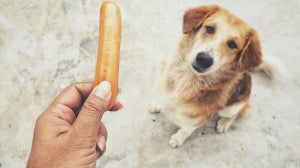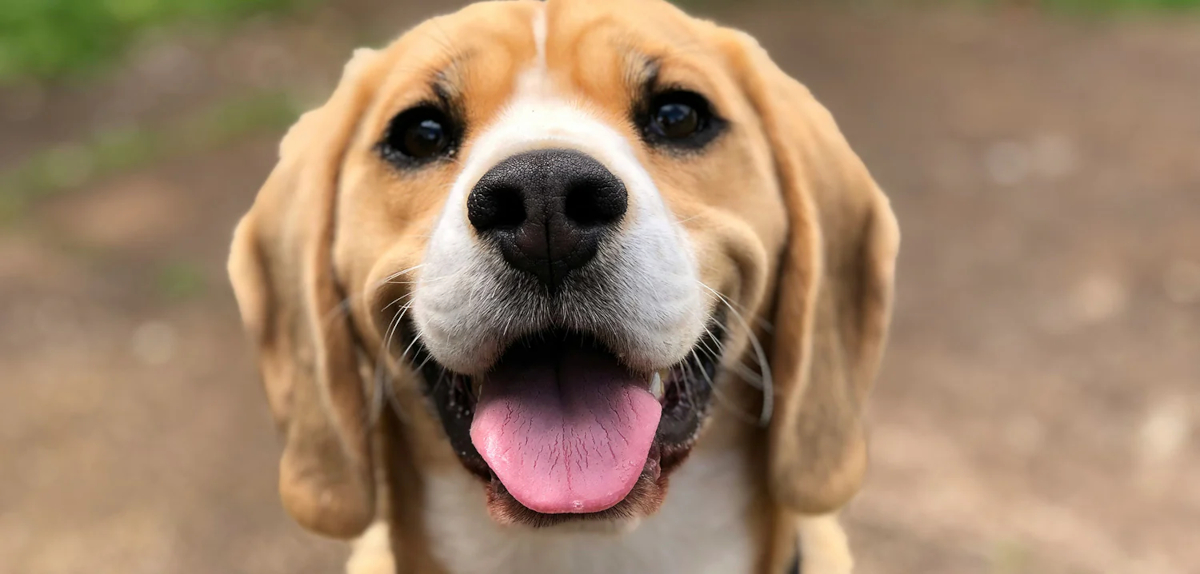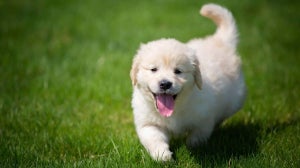
Caring for our furry friends means tending to all their needs, including keeping their ears clean and healthy. Our guide will share the best way to clean a dog's ears, providing a simple step-by-step process on how to clean dog ears safely and effectively, ensuring that your loyal companion stays comfortable and infection-free. Learning how to clean dog ears properly is crucial for maintaining their health and well-being. The importance of this regular routine cannot be overstated; not only does it help to prevent potential health issues but it provides an ideal opportunity for you to strengthen your bond with your pet through gentle handling and care particularly when cleaning your dog's ears. With the right technique and a dash of patience, this essential aspect of dog grooming will become a hassle-free task. Get ready to be equipped with practical tips to turn ear cleaning from a daunting chore into a rewarding act of love for your pup.
Cleaning a dog’s ears - when is it necessary?
When grooming our furry best friends, keeping their ears clean is as important as a cuddly coat or perfectly clipped nails. But unlike bath time, the rules around ear cleaning are not always so clear-cut. You see, not all pups need the same amount of ear pampering. Dogs with floppy ears or those that love a good swim might need more frequent checks. Also, dogs with inner ear hair or those prone to waxy build-ups and ear infections might require a bit more TLC.
You might be thinking, “Okay, how often should I be checking Rover's ears?” Well, that depends on the breed and their lifestyle. Generally, a peek into your pet's ears during their regular grooming – which could range from weekly to monthly – should suffice. However, before you start, it's crucial to understand how to clean dog ears, to avoid turning what should be a gentle process into a discomforting experience for your four-legged pal. You’ll want to brush up on the do's and don'ts, know the best tools for the job, and of course, arm yourself with a vet-approved ear cleaner. Need a refresher on the whole grooming routine? Look at how bathing your dog fits into a healthy hygiene schedule.
But what if Fido's ears seem a bit off? Perhaps they're a tad too smelly, excessively waxy, or he's shaking his head more than a maraca at a fiesta. If your dog suddenly starts frequently shaking its head or is holding one ear down lower than the other, or the ear feels hot to the touch, or the dog avoids you touching it and is clearly in pain, this requires immediate veterinary attention as it could be that a foreign object such as a grass seed is working its way into the ear canal and needs extracting. It’s times like these when a trip to the vet is the best call. Professional cleaning or treatment might be necessary to nip any potential issues in the bud. No one likes seeing their buddy feeling blue, especially with pesky ear issues. Stay alert to signs, and with gentle regular cleaning, show your dog you care while keeping those tail-wagging tunes loud and clear!
Best way to clean a dog’s ears: step by step
Being a pet parent means getting hands-on with grooming – and knowing how to clean dog ears is essential to keeping your canine companion comfortable, happy and healthy. Like us, dogs need a little ear TLC to prevent infections and keep the ears clean. Knowing the best way to clean a dog's ears is crucial for their overall health and well-being. But before you start, it's crucial to understand the dos and don’ts to ensure you’re cleaning those floppy or perky ears safely and effectively.
Step 1: Gather Your Supplies
Before you start the ear-cleaning process, it's essential to ensure that you have the right tools at hand to make the experience as positive as possible for your furry friend. Begin by gathering a vet-recommended dog ear cleaner, gentle cotton balls or soft gauze pads for wiping, and a generous supply of tasty treats to reward your pooch. It's important to avoid using cotton buds or inserting anything deep into the ear canal to prevent any potential harm or discomfort. Remember, our goal is to create a tail-wagging experience that makes your dog happy and free from earache!
Step 2: Make Your Dog Comfortable
Now, we all know that dogs are rather sensitive about their ears, so it's vital to take the time to assist your furry companion in feeling completely at ease during the ear cleaning process. Begin by finding a peaceful and quiet spot where you and your dog can relax together. Before you start, gently stroke your dog and offer reassuring words to calm any nerves. Establishing this initial comfort and trust is crucial - it shows your pup that ear cleaning is another caring gesture that enhances your bond.
Step 3: Examine the Ears
Before cleaning your dog's ears, take a moment to examine them carefully. Look for any signs of infection or irritation, like redness, swelling, or an unusual odour. If everything appears normal, proceed with the cleaning. However, if you notice anything unusual or concerning, you should pause and consult your vet for advice. Remember, as pet parents, our priority is our furry friends' well-being; seeking professional guidance when needed ensures their health and happiness.
Step 4: Apply the Ear Cleaner
Following the instructions on the ear cleaner is vital for maintaining your dog's ear health. It is recommended to start by gently applying the solution to your dog's ear canal, being careful not to apply too much. After applying the ear cleaner to the ear canal, let it flow down naturally while gently massaging the base of the ear. This helps the cleaner reach the needed areas and loosens any build-up or debris.The soft squishy sound you hear is normal and shows the cleaner is applied correctly, caring for your dog's ear hygiene. Taking these steps boosts your furry friend's well-being and comfort.
Step 5: Wipe Away Debris
After the ear cleaner has effectively loosened and removed earwax, take a soft cotton wool ball or a piece of gauze to gently wipe away any lifted debris from the outer ear canal and the creases at the entrance of the ear. Be sure to do this with a steady and light touch, moving in circular motions to ensure thorough cleaning. It's crucial to avoid pushing too far into the ear canal to prevent any damage. The goal is to achieve a clean surface that ensures the ear remains safe, comfortable, and free from any residual wax buildup that may cause discomfort or affect hearing. Often after the initial clean, the debris continues to loosen and work its way up to the opening of the ear so check inside the ear flap daily for the next few days and gently wipe away any dirt that appears.
Step 6: Reward Your Pooch
Never underestimate the power of a good treat – or plenty of them! Rewarding your furry friend with a tasty treat after gently and effectively cleaning their ears can create positive associations with the grooming routine. This positive reinforcement not only makes the experience more enjoyable for your dog but also deepens the bond you share. Ultimately, by incorporating rewards into this grooming task, you are not only ensuring your dog's ear health but also nurturing a stronger connection with your beloved pet. It's truly a win-win situation for both of you!
Ear-cleaning sessions provide the ideal chance to perfect efficient dog ear cleaning, evaluate their condition, and spot issues early. Lifting the dog's ear flap regularly to inspect their ears helps desensitise them to ear handling, facilitating vet examinations. Regular cleaning nurtures a deeper connection with your pet’s health - a vital aim for any dedicated pet parent. For more helpful grooming tips, including the best way to clean dog's ears, check out our guide to dog grooming.
Keep your dog's well-being in mind at every step, including when cleaning your dog's ears, and don't hesitate to consult your vet if you have any concerns. Your furry friend's ears are in your caring hands, and by following these steps, you'll be keeping those ears healthy and your dog happy.
Cleaning dog ears at home - your questions answered
Our FAQ section is here specifically for pet owners like yourself looking for clarity and confidence regarding this important routine. We're dedicated to answering all your questions, guiding you on the dos and don'ts, helping you spot potential issues, and teaching you how to give your loyal companion the best ear care.
What can I use to clean my dogs ears at home?
Start by using a dampened cotton ball or a soft cloth along with a vet-approved ear cleaner. Remember, the key is to be gentle throughout the process and avoid going too deep into the ear canal to prevent any harm. Your pet's comfort and well-being should always come first when tending to their ears.
In the quest for happy, healthy ears, it's just as important to know what not to use as it is to know the correct tools. For the love of tail wags, avoid inserting anything pointed or hard, like cotton swabs, which can push debris further in or damage the sensitive inner ear structures. Stick to specially designed canine ear cleaners, and stay clear of aggressive home concoctions or human ear-care products which could irritate your pup's ear.
To make the ear-cleaning experience positive from the start, consider getting your dog used to the process when their ears are already clean and therefore not at all sore. This approach can help establish a positive association with ear cleaning, making it a stress-free and enjoyable experience for your furry friend. Regular ear checks are part of being a pawsome pet parent. And when in doubt, or if you spy anything unusual, a quick visit to the vet is always the best play. After all, those ears deserve all the care in the world!
Should you clean inside dog's ears?
The short answer is yes, but with a gentle touch and know-how. Dogs have a unique ear structure which requires special care to avoid harm. Your dog's outer ear can be wiped carefully, but going further in can risk damage or discomfort.
In the intimate nook of a dog’s ear canal, nature follows its path, and so should we—with a thoughtful approach. Due to their L-shaped ear canals, dogs are more susceptible to ear infections, which means staying on top of hygiene matters. However, resist the urge to go deep—instead, focus on the outer ear and leave the inner workings untouched. Use a damp cloth or a vet-approved cleaner on the part you can see. Regarding the sensitive inner ear, it’s best to stick to a ‘look, don’t touch’ policy, leaving deeper cleans to the professionals. Remember, do not use cotton swabs, which can push debris further into the ear or even cause injured eardrums. Sure, it’s a little tricky, but with the right routine, you'll have your pup’s ears in tip-top shape without a whimper.
What is the brown gunk in my dog’s ears?
It's actually quite common and is referred to medically as cerumen. Healthy dog ears are typically clean, odour-free, and without excess wax or discharge. Not all ear gunk is cause for alarm, but it can sometimes indicate an ear infection, especially if accompanied by a foul smell or your dog shows signs of discomfort. To keep those adorable ears in top condition, having a vet take a peek if anything out of the ordinary pops up is a good idea.
Expanding on this, if the "brown gunk" or any consistent ear discharge is noticed, it's best not to ignore it. A healthy dog ear should have a small amount of pale yellowish wax, but a sudden increase or change in the discharge, particularly to a darker brown colour, could suggest issues such as infections or mites. A thorough examination can confirm whether treatment is needed at the vet's clinic, ensuring your furry friend stays happy and comfortable. Wondering about other potential health issues in dogs? Learn more about mange in dogs, another condition that may affect your canine companion's well-being. Beyond regular ear checks, maintaining overall health with a balanced, nutritious diet such as James Wellbeloved™ Dog Food can significantly contribute to your dog’s well-being and could potentially prevent health woes like ear infections. Remember, a healthy pup is a happy pup, and it all starts with what's in their bowl.

Related Articles








